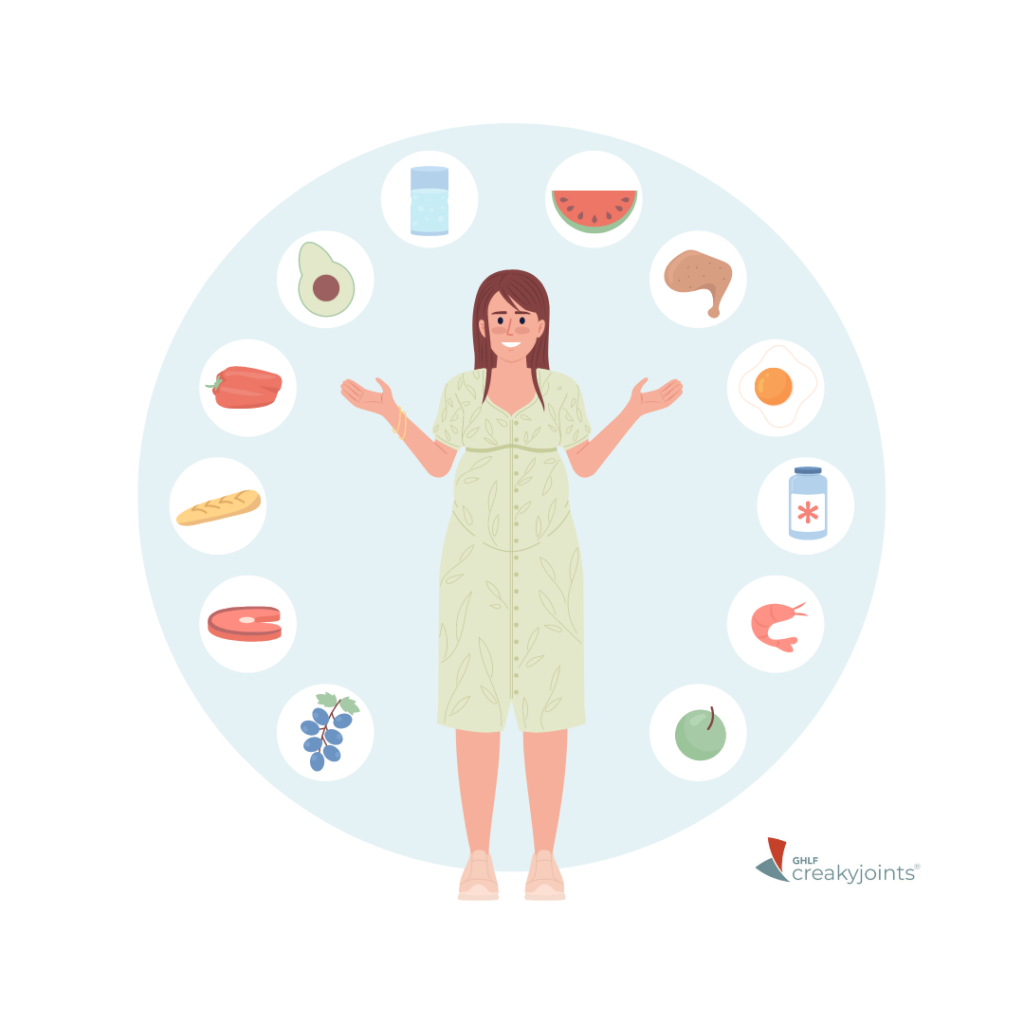

The first time I talked to a rheumatologist about non-medication ways to control my rheumatoid arthritis (RA) inflammation, it wasn’t because I wanted to go off my meds. At the time, there was no effective treatment for RA beyond aspirin for pain, so I tried a lot of alternative and complementary therapies.
The copper bracelet did nothing, acupuncture helped for a few days, physiotherapy slowed fusion of my joints, but we were looking for something with more impact. My then-rheumatologist said that some of his patients seemed to respond to a vegan or vegetarian diet. I drew a line, saying, “I’ve lost so much because of this illness; I don’t want to give up steak.”
I was 13 years old. We only ate steak on special occasions, but I always enjoyed it. My active RA inflammation caused intense and constant nausea, and the large doses of aspirin I took for pain made it worse.
I was thin as a rail, so my mother didn’t restrict my diet: If I could eat it, she gave it to me. Fresh vegetables played a large role, as did simple sandwiches, rice dishes, and certain desserts. I didn’t have any food triggers for increased inflammation, but my body did — and still does — have strong preferences.
Over the years, I’ve learned to pay attention to my body’s messages and avoid foods it doesn’t want as the consequences could mean hours or even days of feeling sicker than normal. Essentially, I learned to follow what is now known as intuitive eating, connecting to my body’s needs and wants, including not getting too full.
The Evolution of Treatment and Dietary Research
Skip forward almost half a century, and we now have effective treatments that can bring many of us, including myself, into remission. Recent research into diet and RA supports the positive impact of dietary choices.
While vegetarian and vegan diets have some support, but time and again, the Mediterranean diet or anti-inflammatory diet consistently comes out on top as most effective for RA. This diet, rich in omega-3s and fatty fish like salmon and tuna, fresh vegetables, whole grains, and fibre, has been found to improve overall health, including heart health and autoimmune arthritis inflammation. The evidence is so strong that the American College of Rheumatology includes the Mediterranean diet in its recommendations for treating RA alongside medications and complementary therapies.
Despite this, I don’t follow a particular diet. Building a close connection to my body’s messages around food at a young age became embedded it in my psyche. I still check in with my body when deciding what to eat, but now I have a wider range of options, thanks to finding a medication that works for me.
However, going into remission was not the end of my issues with food.
When I first started a biologic, I had spent the previous eight months in a severe, life-altering flare, barely eating. This miracle medication suppressed my RA and created an unstoppable hunger, but only for nutritious foods — anything sugary made me feel sick. I craved high volumes of animal protein and delighted in vegetables and fibre.
Looking back, it’s clear I needed proper nutrition and lots of protein to rebuild my muscles, my body, and my health. I obeyed the cravings, eating like a horse, but strangely I lost a lot of weight. Two years in, I had zero fact on my body. Contrary to popular opinion, that’s not a good thing.
Choosing a Diet That Works for Me
Due to other side effects, I switched to a different biologic and started gaining weight, quickly realizing how much better I felt when I retained some of the nutrition rather than immediately burning it up. I also stopped craving animal protein. In fact, for several years, I didn’t eat meat at all because the odour of cooking began to smell like rotting flesh to me. It was decidedly odd, but I felt great in every other way that counted.
For protein, I ate fish and legumes. This, as well as gaining a vegan sister-in-law and learning more about this style of cooking, was the nudge to further evolving the way I ate — and still eat.
These days, my diet is 50 percent plant-based, with fatty fish every few weeks, occasional pork, and heavy on fruits and vegetables. I eat this way because it makes me feel better, because my body tells me this is what it wants. If I eat meat, especially beef, I feel heavy and sluggish, and although my sugar intake has somewhat increased, I still feel queasy if I have too many treats.
I’ve taken my second biologic for 17 years and it has helped me be healthy and enabled me to eat what I want — there’s no more nausea. Aside from avoiding my multiple food allergies, I continue to base my diet on guidance from my body. Sometimes, that’s a nut-free chocolate croissant, but mostly it’s a blend of Mediterranean-style and vegetarian foods and trying every allergen-safe global cuisine I can.
After being nauseated for most of my life, developing food allergies to nuts and eggs as an adult, and experiencing what it’s like to be dangerously thin, good food and being able to eat it is a big factor in my quality of life.
Thanks to a mix of my medication, menopause, and middle-age, I am pudgier that I have ever been before, but I embrace my physical self as it is. I eat what my body tells me it needs, grazing on frequent small portions, and I stop when I’m no longer hungry (this is different than stopping when you’re full).
In my life now, food is both fuel and a source of delight. And as long as my doctor tells me I’m healthy, I see no point in artificial restrictions simply for the purpose of fitting into a smaller pair of pants.
Stay in Touch with CreakyJoints Canada
Part of the nonprofit Global Healthy Living Foundation, CreakyJoints is a digital community for millions of arthritis patients and caregivers worldwide who seek education, support, advocacy, and patient-centered research. All of our programming and services are always provided free of charge. As we grow CreakyJoints Canada we want to hear from you. Please join our email list to stay connected, learn about new content and initiatives, and send us suggestions and ideas.





